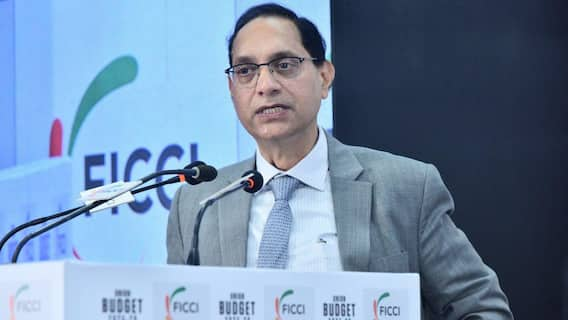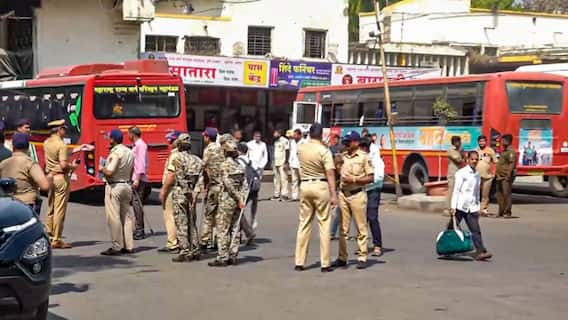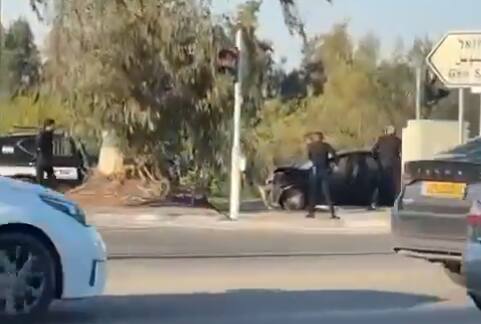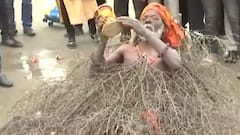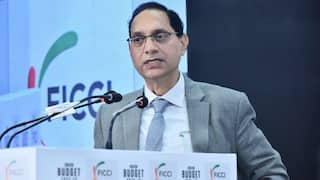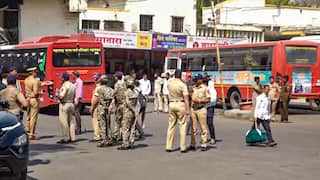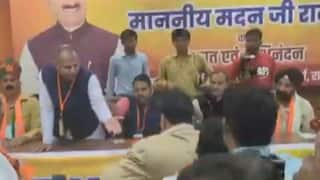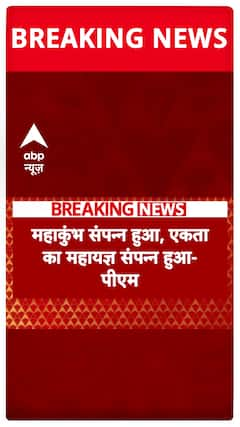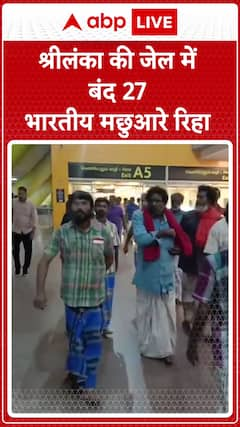Decades-Long Unresolved Row Over The Sutlej-Yamuna Link Canal — Explained
The battle over the Sutlej-Yamuna Link has been going on for decades, with no solution in sight even now. ABP Live explains what the controversy is all about.

The stand-off between Haryana and Punjab continues to haunt the proposed Sutlej-Yamuna Link (SYL) as the chief ministers of the two states failed to reach an amicable solution at a meeting hosted by the Union Jal Shakti ministry on Wednesday. This was the third meeting between the chief ministers of the two states.
The meeting, advised by the Supreme Court in September last year, was chaired by Union Jal Shakti Minister Gajendra Singh Shekhawat in New Delhi.
After the meeting, Haryana CM Manohar Lal Khattar said: "We had a third meeting with the Punjab government on the SYL issue and are yet to find an amicable solution. They aren't ready to bring the issue of SYL on the agenda and are only talking about the availability of water. We'll apprise the Supreme Court about it."
Punjab CM Bhagwant Mann said that the issue will have to be decided by the Supreme Court as the state did not have even a single drop of water to share.
"We want to save the Sutlej river. We have clearly stated that we don't have water. More than 78% of our 150 blocks are in the extreme dark zone due to the depletion of the groundwater table. Hence, we can't give water to any state. We will fight in Supreme Court," Mann said after the meeting.
What Is Sutlej-Yamuna Link?
The Sutlej-Yamuna Link (SYL) is a proposed 211-kilometre canal that would connect the Sutlej River in Punjab with the Yamuna River in Haryana, providing Haryana with a share of the water from the Ravi and Beas rivers that flow through Punjab. Once the construction is completed, the SYL canal will enable the sharing of the waters of the Ravi and Beas between Haryana and Punjab.
The SYL canal project was proposed following the Indus Water Treaty in 1960 between India and Pakistan, which granted India 'free and unrestricted use' of the Ravi, Beas, and Sutlej rivers. The canal was also intended to address the dry conditions in the present-day Punjab-Haryana region. The Sutlej-Yamuna Link canal was planned in 1966 when Haryana was separated from Punjab. In 1976, the Government of India approved the construction of the canal.
While a 121 km stretch of the canal was to be built in Punjab, another 90 km was to be constructed in Haryana. Haryana completed its portion of the project by June 1980, but work on the portion in Punjab, which was launched by Indira Gandhi, the then Prime Minister of India, near the Kapoori village in Patiala district, was stalled due to protests by the Shiromani Akali Dal (SAD), which was in Opposition back then.
What Is The Controversy Around SYL?
One of the main controversies surrounding the SYL canal is the issue of water rights and allocation. There is a long-standing dispute between the states of Haryana, Punjab, and Rajasthan over the allocation of water from the Sutlej and Yamuna rivers. The construction of the SYL canal would require the allocation of water from the Sutlej river to the Yamuna river by the construction of a massive dam, which has led to tensions between these states.
Another major controversy surrounding the SYL canal is over the potential impact on the environment and local communities. Many experts believe that the canal would have a significant impact on the water levels and flows of both rivers, potentially leading to water shortages and environmental degradation.
Additionally, there are concerns about the potential impact on local farmers and communities, as the construction of the canal could displace thousands of people and lead to the loss of agricultural land.
Centre On SYL
The division of resources in Punjab before the 1966 reorganisation left the terms for sharing the waters of the Ravi and Beas rivers unresolved. Citing the principle of riparian water rights, which gives the owner of land adjacent to a water body the right to use the water, Punjab opposed sharing the water of these rivers with Haryana. Punjab also claims it does not have excess water to share.
In 1976, the Centre issued a notification stating that both states would receive 3.5 million acre-feet of water each. Then, on December 31, 1981, Punjab, Haryana, and Rajasthan signed an agreement to reallocate the waters of the Ravi and Beas in the "overall national interest and for optimum utilisation of the waters".
This agreement was based on a reassessment of the available water, and the water flowing in the Ravi and Beas was estimated at 17.17 million acre-feet. Of this, 4.22 million acre-feet was allocated to Punjab, 3.5 million acre-feet to Haryana, and 8.6 million acre-feet to Rajasthan, with the agreement of all three states.
The beginning of the construction sparked the Kapoori Morcha protest led by the SAD against the SYL canal. In July 1985, the then Prime Minister, Rajiv Gandhi, signed an accord with SAD chief Harchand Singh Longowal, agreeing to establish a tribunal to determine the water sharing between the states.
The Ravi & Beas Water Tribunal, led by Supreme Court Judge V Balakrishna Eradi, was established in 1986 to verify the water usage claims made by Punjab, Haryana, and Rajasthan regarding their shares in the remaining waters. In 1987, the tribunal recommended that Punjab and Haryana's shares be increased to 5 MAF and 3.83 MAF, respectively.
However, the canal construction faced opposition from militants in Punjab. In 1988, several labourers working on the project were killed near Majat village and in 1990, militants assassinated chief engineer M L Sekhri and superintending engineer Avtar Singh Aulakh. Longowal was also killed by militants just a month after signing the accord with Rajiv Gandhi.
At present, the Ministry of Jal Shakti is trying to mediate between Punjab and Haryana and find a solution to the issue.
Legal Battle Ove SYL
The controversy over the SYL canal has had far-reaching political and social implications. Haryana government in 1999 moved the Supreme Court, seeking an order for the completion of the canal.
In 2002, the Supreme Court of India ruled in favour of Haryana, stating that the SYL canal was necessary to address the water shortages in the state and ordered the completion of the project. However, the Punjab state government, led by the SAD, opposed the ruling and passed the Punjab Termination of Agreements Act, which aimed to nullify all previous water-sharing agreements with neighbouring states, including the SYL canal.
In 2016, the Supreme Court of India rejected the Punjab Termination of Agreements Act and ordered the completion of the SYL canal. This ruling was met with widespread protests in Punjab. In 2017, the Punjab Assembly passed a bill seeking to withdraw the state's share of the SYL canal's water and declaring the canal to be a property of the state. This move was seen as a direct challenge to the Supreme Court's ruling and sparked a new round of legal battles.
In 2018, Haryana accused Punjab of not releasing enough water from the Sutlej and Beas rivers, leading to a shortage of water in the state. This led to protests and a breakdown in relations between the two states.
In recent years, there have been efforts to find a resolution to the SYL canal controversy. In 2019, the Punjab and Haryana state governments agreed to set up a committee to examine the water needs of both states and find a solution to the dispute. The committee is currently working on its recommendations.
Despite these efforts, the SYL canal controversy remains a contentious issue, with both states continuing to stake their claims over water resources.
Trending News
Top Headlines









